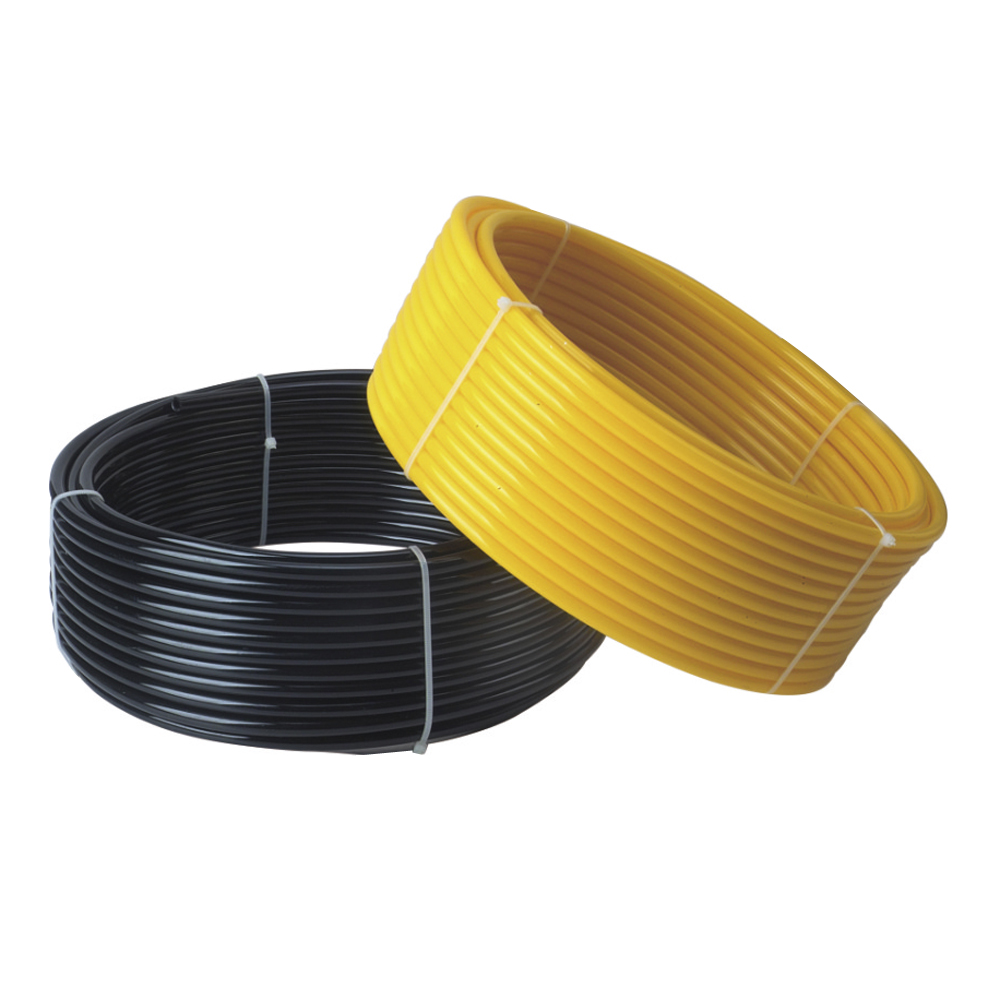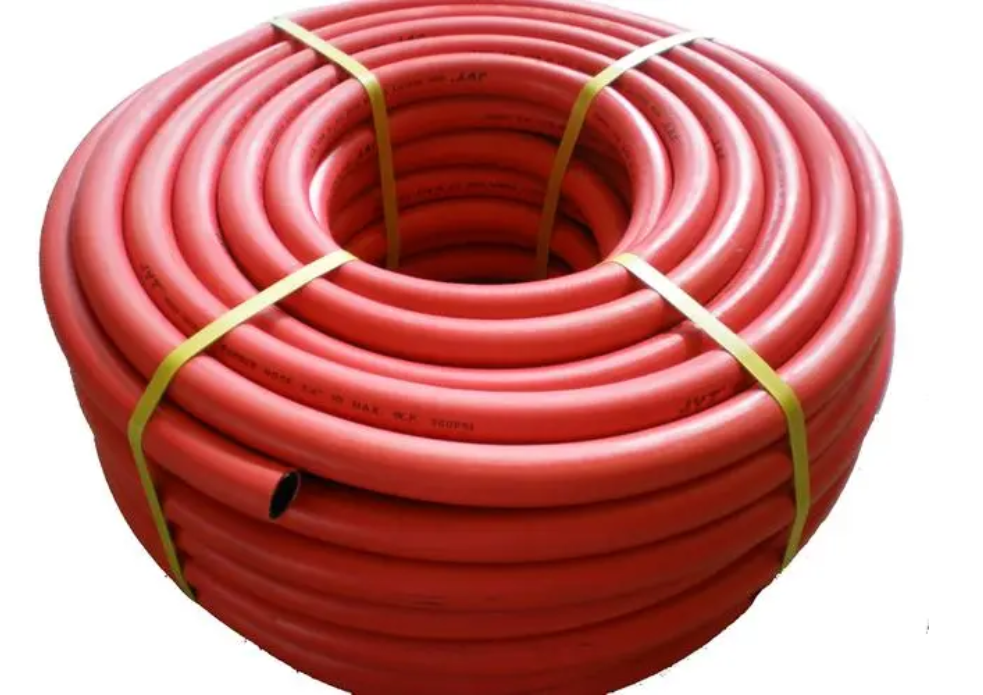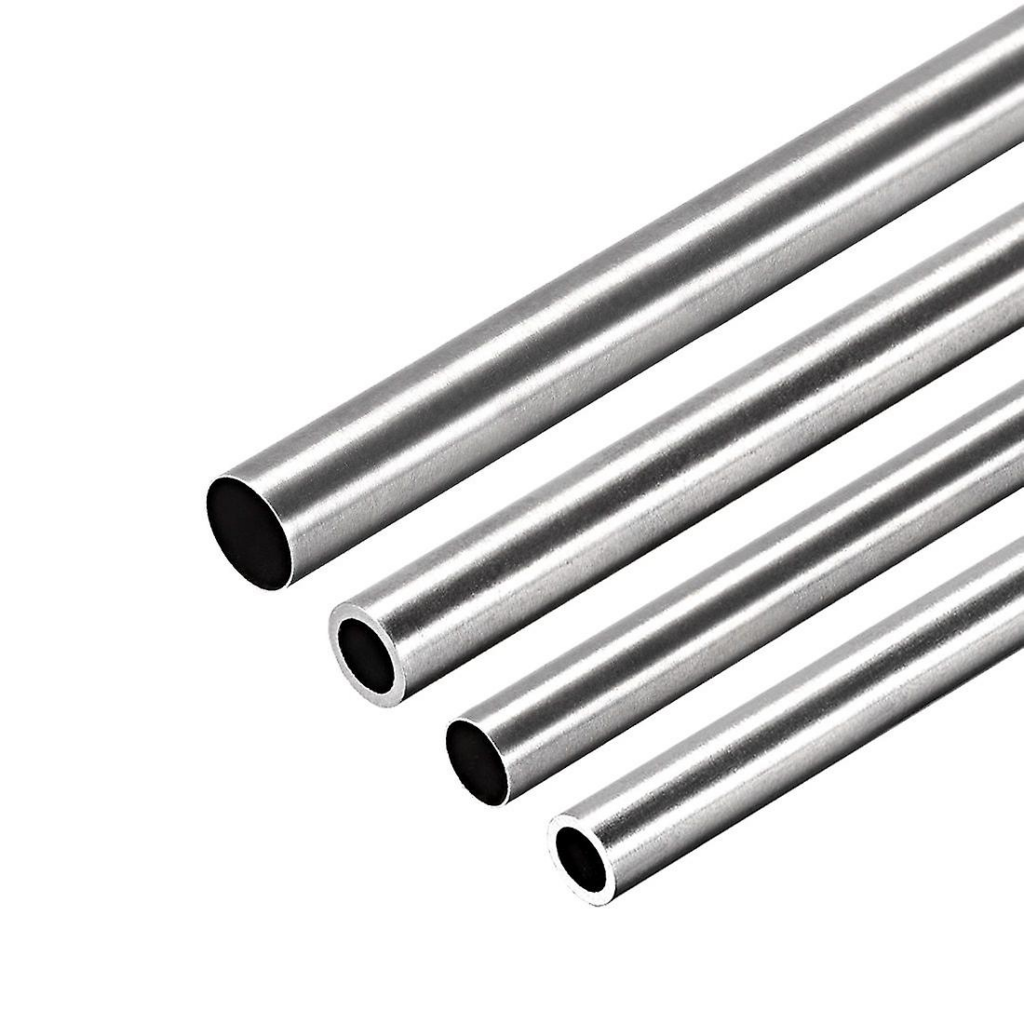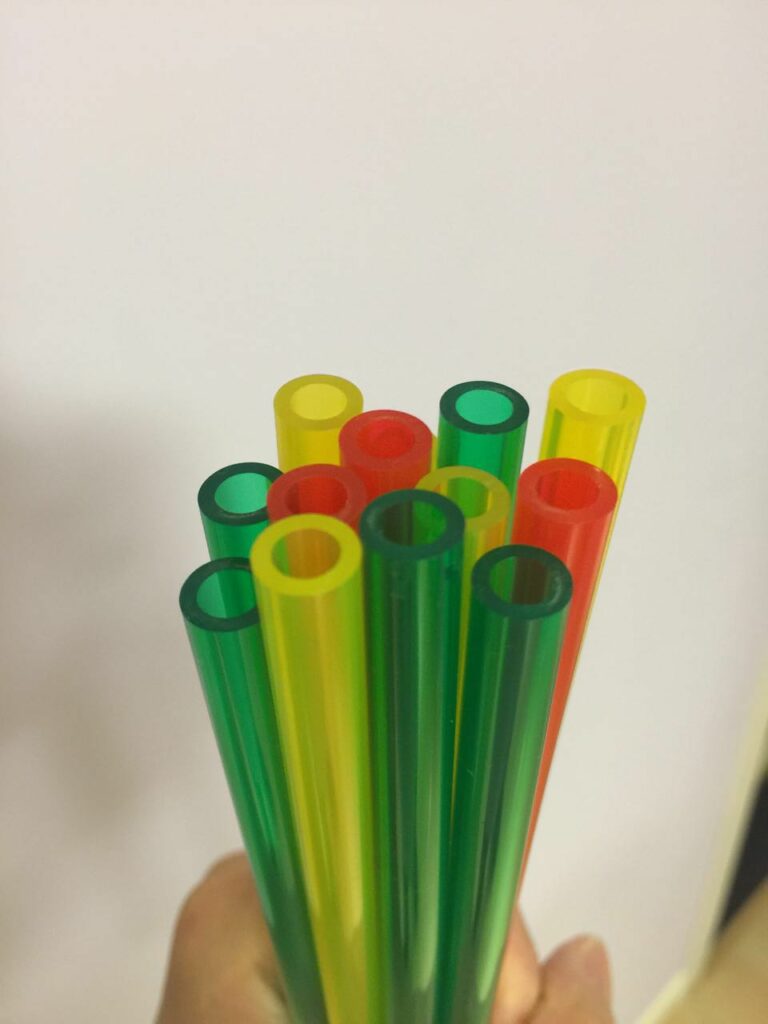Introduction
Pneumatic tubing is a vital component in many industrial and manufacturing applications. It is used to transport compressed air, gases, and fluids from one location to another. Pneumatic tubing is designed to withstand high pressure and temperature, and it is available in a variety of materials, each with its own unique properties and characteristics.
There are several types of pneumatic tubing materials available on the market today, including plastic, rubber, metal, and composite. Each material has its own set of pros and cons, and selecting the right material for a particular application can be critical to ensuring optimal performance and safety.
In this article, we will provide a brief overview of the different types of pneumatic tubing materials and discuss the pros and cons of each. We will also provide some guidance on factors to consider when selecting the right tubing material for your application.
Plastic Tubing
Plastic tubing is a popular choice for pneumatic applications due to its cost-effectiveness, lightweight, and ease of installation. It is available in a variety of materials, including PVC, polyurethane, and nylon, etc.

Properties of Plastic Tubing
Lightweight
Plastic tubing is typically lightweight and easy to handle, making it an ideal choice for applications where weight is a concern.
Flexible
Plastic tubing is also flexible, which makes it easy to bend and route through tight spaces. This flexibility also helps to reduce stress on the tubing and fittings, which can extend the life of the tubing.
Corrosion-resistant
Many types of plastic tubing are resistant to corrosion, which makes them suitable for use in harsh environments where metal tubing may corrode and fail.
Resistant to chemicals and abrasion
Plastic tubing is also resistant to many types of chemicals and abrasion, which makes it a good choice for applications where exposure to corrosive or abrasive substances is a concern.
Easy to install
Finally, plastic tubing is easy to install and requires minimal tools and equipment. This can help to reduce installation time and costs, making it a cost-effective choice for many applications.
Cons: May not withstand high pressure or temperature, may be prone to cracking or splitting over time.
Applications Where Plastic Tubing May Be Suitable
Pneumatic control systems: Plastic tubing is commonly used in pneumatic control systems, where it is used to transport compressed air to various components, such as valves, cylinders, and actuators.
Laboratory and medical equipment: Plastic tubing is also used in laboratory and medical equipment, where it is used to transport fluids and gases, such as blood, saline, and oxygen.
Food and beverage processing: Plastic tubing is commonly used in the food and beverage processing industry, where it is used to transport liquids, such as water, juice, and milk.
Water treatment: Plastic tubing is also used in water treatment applications, where it is used to transport water and other liquids through filtration systems and other treatment processes.
Automotive and transportation industries: Plastic tubing is used in a variety of automotive and transportation applications, such as fuel lines, brake lines, and air conditioning systems.
In summary, plastic tubing is a good choice for applications where cost-effectiveness, flexibility, and ease of installation are important factors. However, it may not be suitable for high-pressure or high-temperature applications where more durable materials are required.
Rubber Tubing
Rubber tubing is a popular choice for pneumatic applications due to its flexibility, durability, and resistance to abrasion and chemicals. It is available in a variety of materials, including natural rubber, synthetic rubber, and silicone.

Properties of Rubber Tubing
Flexible
Rubber tubing is highly flexible, which makes it easy to bend and route through tight spaces. This flexibility also helps to reduce stress on the tubing and fittings, which can extend the life of the tubing.
Durable
Rubber tubing is also highly durable, which makes it suitable for use in applications where the tubing may be exposed to harsh environments or high levels of wear and tear.
Resistant to abrasion and chemicals
Rubber tubing is resistant to abrasion and many types of chemicals, which makes it a good choice for applications where exposure to corrosive or abrasive substances is a concern.
Good elasticity
Rubber tubing has good elasticity, which means it can stretch and return to its original shape without losing its structural integrity. This property makes it a good choice for applications where the tubing may be subjected to repeated bending or flexing.
Good temperature resistance
Rubber tubing has good temperature resistance, which means it can withstand a wide range of temperatures without becoming brittle or breaking down.
Pros: Flexible, durable, resistant to abrasion and chemicals, good elasticity, good temperature resistance.
Cons: May not be suitable for high-pressure applications, may not be as cost-effective as plastic tubing.
Applications Where Rubber Tubing May Be Suitable
Pneumatic control systems: Rubber tubing is commonly used in pneumatic control systems, where it is used to transport compressed air to various components, such as valves, cylinders, and actuators.
Medical and laboratory equipment: Rubber tubing is also used in medical and laboratory equipment, where it is used to transport fluids and gases, such as blood, saline, and oxygen.
Chemical processing: Rubber tubing is commonly used in chemical processing applications, where it is used to transport corrosive or abrasive chemicals.
Automotive and transportation industries: Rubber tubing is used in a variety of automotive and transportation applications, such as fuel lines, brake lines, and air conditioning systems.
Agriculture and farming: Rubber tubing is also used in agriculture and farming applications, where it is used to transport water and other liquids through irrigation systems and other agricultural equipment.
In summary, rubber tubing is a good choice for applications where flexibility, durability, and resistance to abrasion and chemicals are important factors. However, it may not be suitable for high-pressure applications where more durable materials are required, and it may not be as cost-effective as plastic tubing.
Metal Tubing
Metal tubing is a popular choice for high-pressure and high-temperature pneumatic applications due to its strength, durability, and resistance to corrosion. It is available in a variety of materials, including stainless steel, copper, and aluminum.

Properties of Metal Tubing
Strong
Metal tubing is highly strong and rigid, which makes it suitable for applications where high levels of strength and stability are required.
Durable
Metal tubing is also highly durable, which makes it suitable for use in applications where the tubing may be exposed to harsh environments or high levels of wear and tear.
Resistant to high pressure and temperature
Metal tubing is resistant to high pressure and temperature, which makes it a good choice for applications where the tubing may be exposed to extreme conditions.
Resistant to corrosion
Metal tubing is also resistant to corrosion, which makes it suitable for use in applications where the tubing may be exposed to corrosive substances.
Good conductivity
Metal tubing has good conductivity, which makes it a good choice for applications where the tubing may be used to transport electrical signals or power.
In summary, metal tubing is strong, durable, resistant to high pressure and temperature, resistant to corrosion, and has good conductivity. These properties make it a good choice for a variety of pneumatic applications where strength, durability, and resistance to harsh
Pros: Strong, durable, can withstand high pressure and temperature, resistant to corrosion, good conductivity.
Cons: May be heavy and difficult to install, may be more expensive than plastic or rubber tubing.
Applications Where Metal Tubing May Be Suitable
Hydraulic systems: Metal tubing is commonly used in hydraulic systems, where it is used to transport hydraulic fluid to various components, such as pumps, cylinders, and motors.
Pneumatic control systems: Metal tubing is also used in pneumatic control systems, where it is used to transport compressed air to various components, such as valves, cylinders, and actuators.
Aerospace and aviation industries: Metal tubing is used in a variety of aerospace and aviation applications, such as fuel lines, hydraulic lines, and pneumatic systems.
Oil and gas industries: Metal tubing is commonly used in the oil and gas industries, where it is used to transport oil, gas, and other fluids through pipelines and other equipment.
Chemical processing: Metal tubing is also used in chemical processing applications, where it is used to transport corrosive or abrasive chemicals.
In summary, metal tubing is a good choice for applications where strength, durability, and resistance to high pressure and temperature are important factors. However, it may be heavier and more difficult to install than plastic or rubber tubing, and it may be more expensive.
Composite Tubing
Composite tubing is a popular choice for pneumatic applications due to its ability to combine the benefits of different materials, such as strength, durability, and flexibility. It is typically made from a combination of materials, such as fiberglass, carbon fiber, and resin.

Properties of Composite Tubing
Lightweight
Composite tubing is highly lightweight, which makes it ideal for applications where weight reduction is important, such as in aerospace and automotive industries.
Strong
Composite tubing is also highly strong, which makes it suitable for applications where high levels of strength and stability are required.
Durable
Composite tubing is highly durable, which makes it suitable for use in applications where the tubing may be exposed to harsh environments or high levels of wear and tear.
Resistant to corrosion and abrasion
Composite tubing is resistant to corrosion and abrasion, which makes it suitable for use in applications where the tubing may be exposed to corrosive substances or abrasive materials.
Flexible
Composite tubing is also highly flexible, which makes it easy to bend and route through tight spaces. This flexibility also helps to reduce stress on the tubing and fittings, which can extend the life of the tubing.
In summary, composite tubing is lightweight, strong, durable, resistant to corrosion and abrasion, and flexible. These properties make it a good choice for a variety of applications where weight reduction, strength, durability, and resistance to harsh environments are important factors
Pros: Combines the benefits of different materials, lightweight, strong, durable, resistant to corrosion and abrasion, flexible.
Cons: May be more expensive than other types of tubing.
Applications Where Composite Tubing May Be Suitable
Aerospace and aviation industries: Composite tubing is commonly used in the aerospace and aviation industries, where it is used to manufacture aircraft components such as wings, fuselages, and landing gear.
Automotive and transportation industries: Composite tubing is also used in the automotive and transportation industries, where it is used to manufacture lightweight and strong parts such as drive shafts, suspension components, and body panels.
Marine and boating industries: Composite tubing is used in the marine and boating industries, where it is used to manufacture boat hulls, masts, and other components that require strength and durability in harsh marine environments.
Wind energy: Composite tubing is also used in the wind energy industry, where it is used to manufacture wind turbine blades that require strength and lightweight properties to efficiently generate energy.
Sporting goods: Composite tubing is used in the sporting goods industry to manufacture lightweight and strong equipment such as fishing rods, golf club shafts, and bicycle frames.
In summary, composite tubing is a good choice for applications where a combination of strength, durability, and flexibility are important factors. However, it may be more expensive than other types of tubing.
Factors to Consider When Choosing Pneumatic Tubing Materials
When selecting the right pneumatic tubing material for your application, there are several factors to consider. These include:
Application Requirements
The first factor to consider is the specific requirements of your application. What pressure and temperature is the tubing expected to withstand? What is the required level of flexibility, durability, and chemical resistance? Answering these questions will help you determine which material is best suited for your application.
Environmental Factors
The environment in which the tubing will be used is also an important consideration. Will it be exposed to extreme temperatures, chemicals, or UV radiation? Will it be used in a corrosive or abrasive environment? Understanding the environmental factors that the tubing will be exposed to will help you select a material that can withstand these conditions.
Cost
Cost is always a consideration when selecting any component for an application. Plastic tubing is typically the most cost-effective option, while metal tubing is usually the most expensive. Composite tubing falls somewhere in between. However, it’s important to consider the long-term cost of the tubing, including maintenance and replacement costs.
Maintenance
Finally, consider the maintenance requirements of the tubing. Will it require regular cleaning or lubrication? Will it need to be replaced frequently? Understanding the maintenance requirements of the tubing will help you select a material that is easy to maintain and will last for a long time.
In summary, when selecting a pneumatic tubing material, it’s important to consider the specific requirements of your application, the environmental factors it will be exposed to, the cost, and the maintenance requirements. By carefully considering these factors, you can select the right tubing material for your application, ensuring optimal performance and safety.
Conclusion
In conclusion, selecting the right pneumatic tubing material is critical to ensuring optimal performance and safety in industrial and manufacturing applications. There are several types of tubing materials available, each with its own set of pros and cons.
Plastic tubing is a cost-effective and lightweight option, but may not be suitable for high-pressure or high-temperature applications. Rubber tubing is flexible and durable, but may not be as cost-effective as plastic tubing. Metal tubing is strong and durable, but may be heavier and more difficult to install than plastic or rubber tubing. Composite tubing combines the benefits of different materials, but may be more expensive than other types of tubing.
When selecting a tubing material, it’s important to consider the specific requirements of your application, the environmental factors it will be exposed to, the cost, and the maintenance requirements. By carefully considering these factors, you can select the right tubing material for your application, ensuring optimal performance and safety.
for more, please contactu us.


